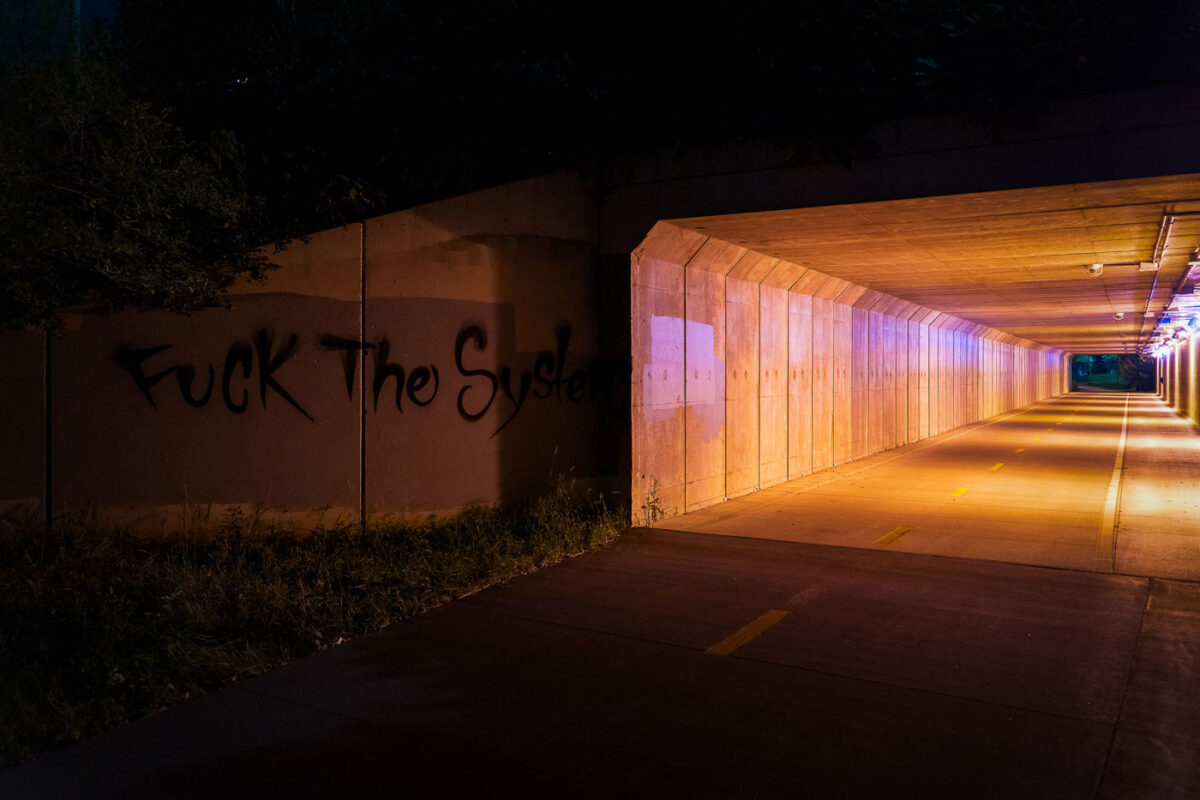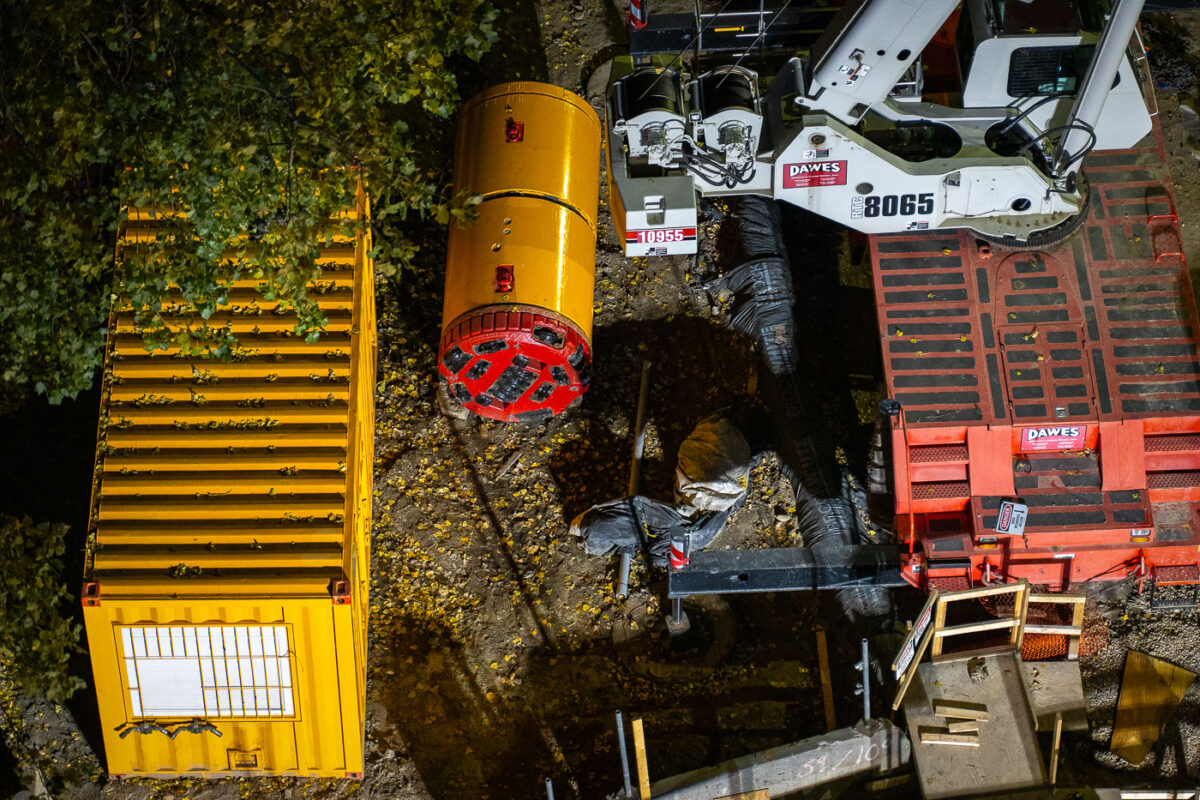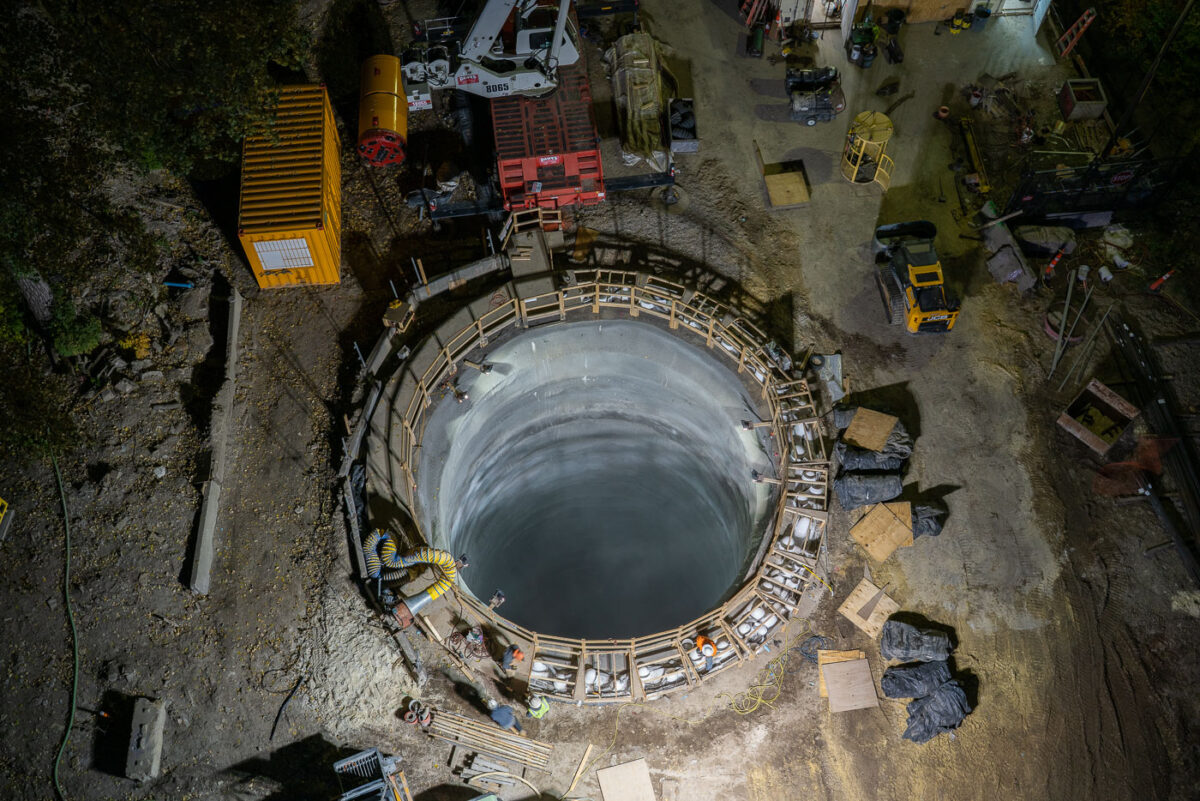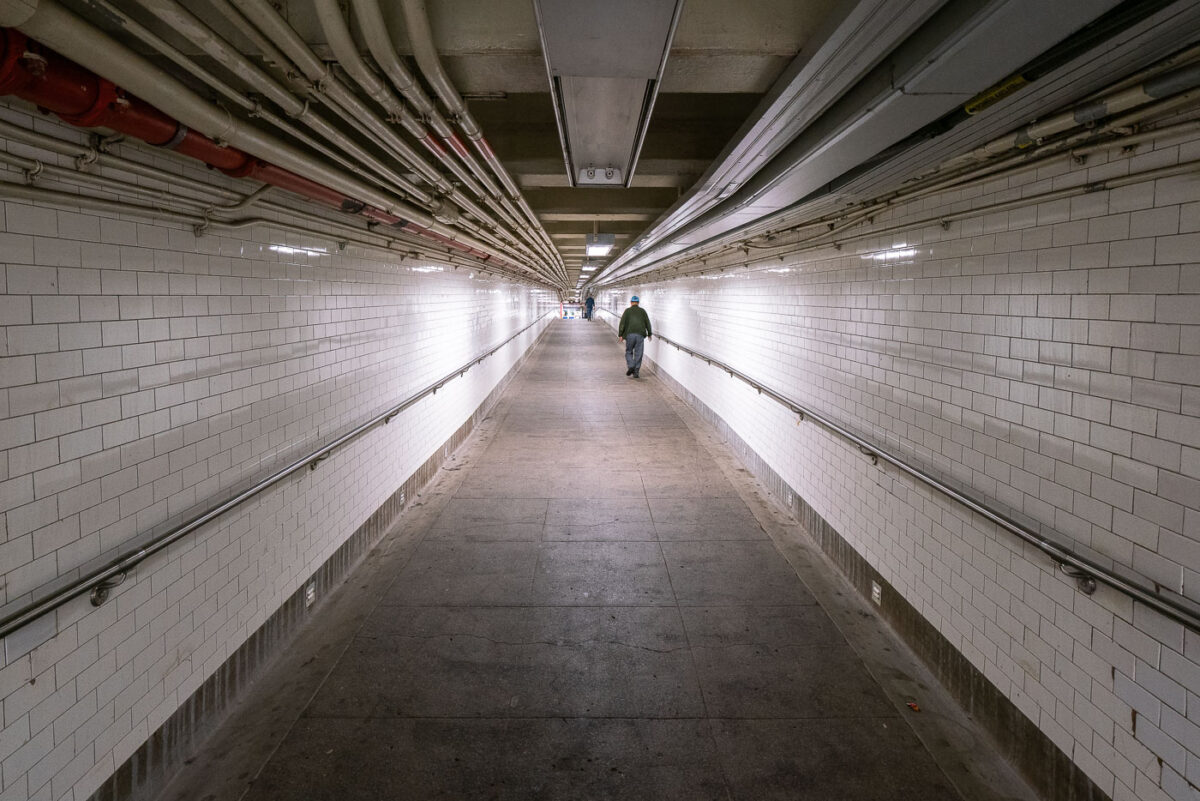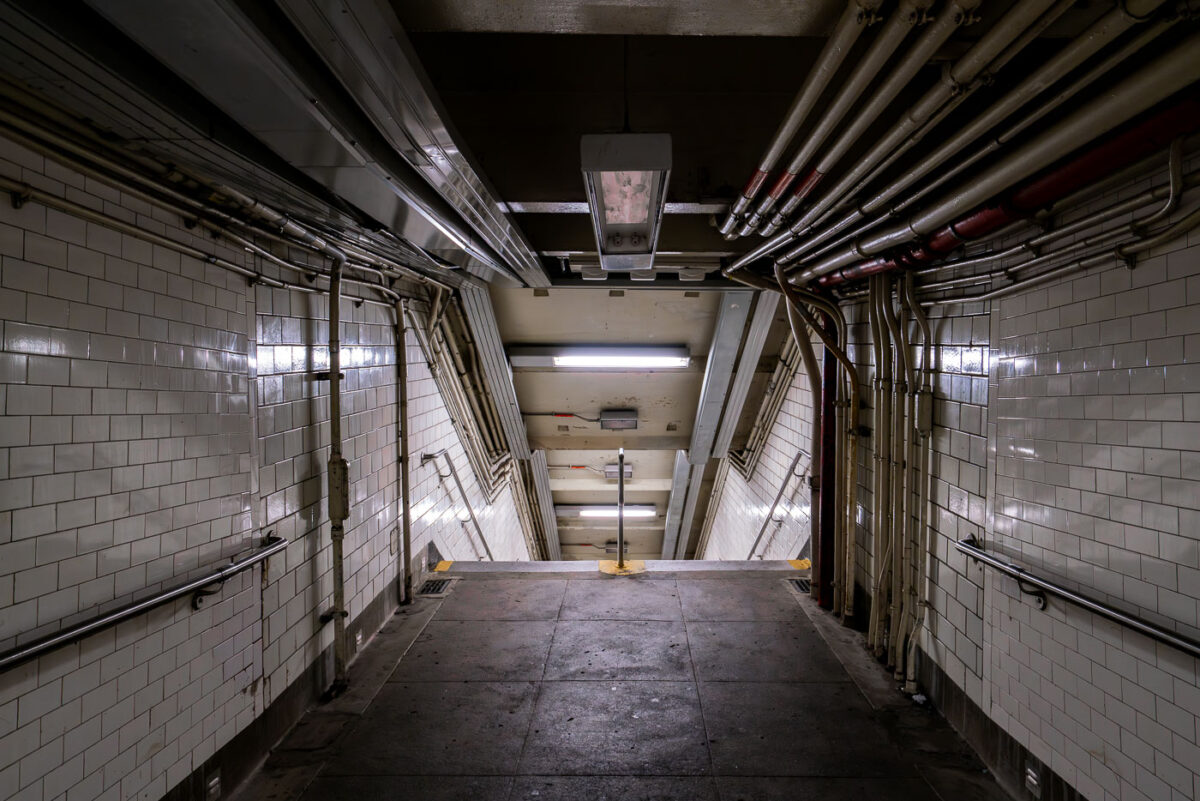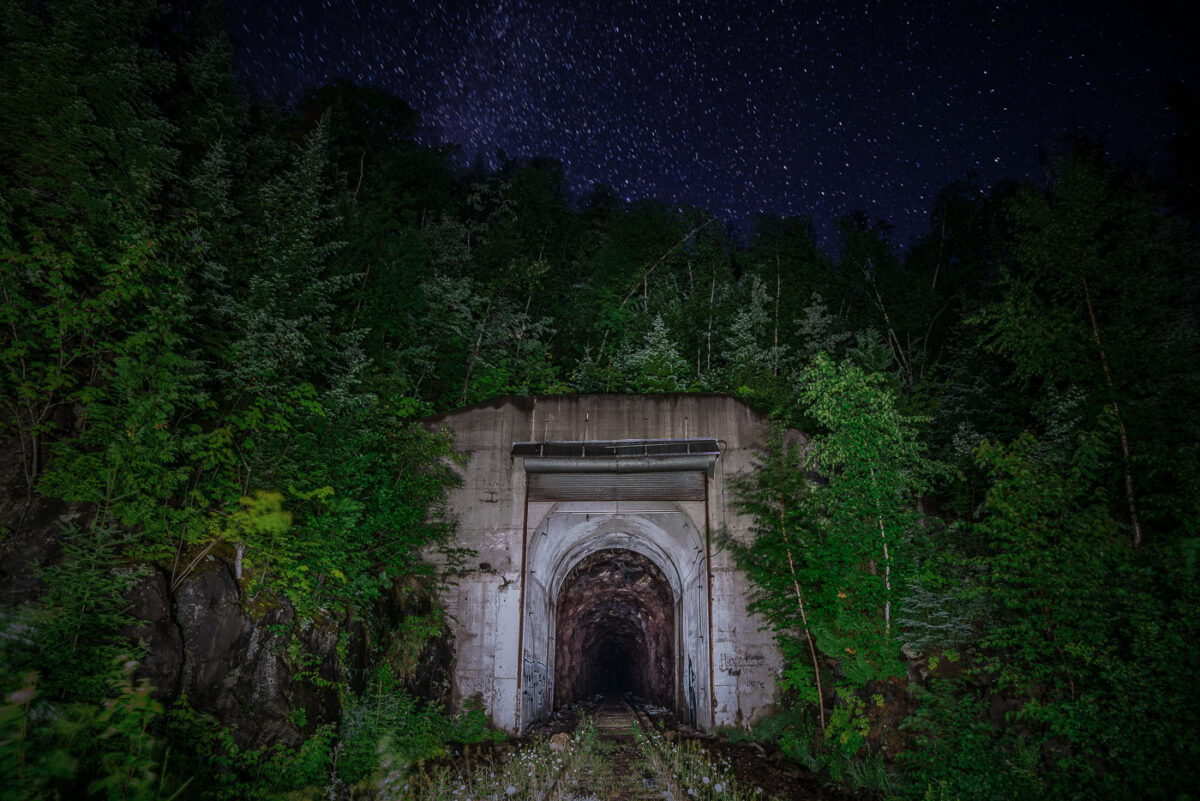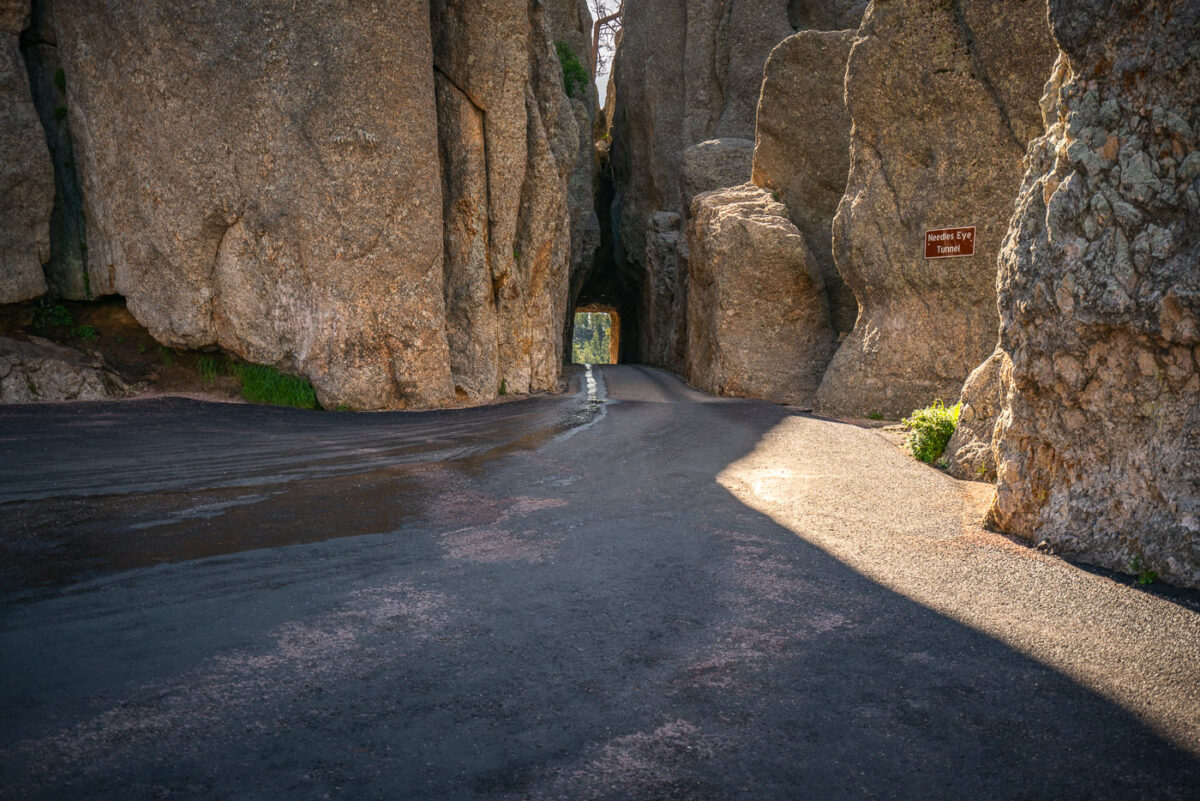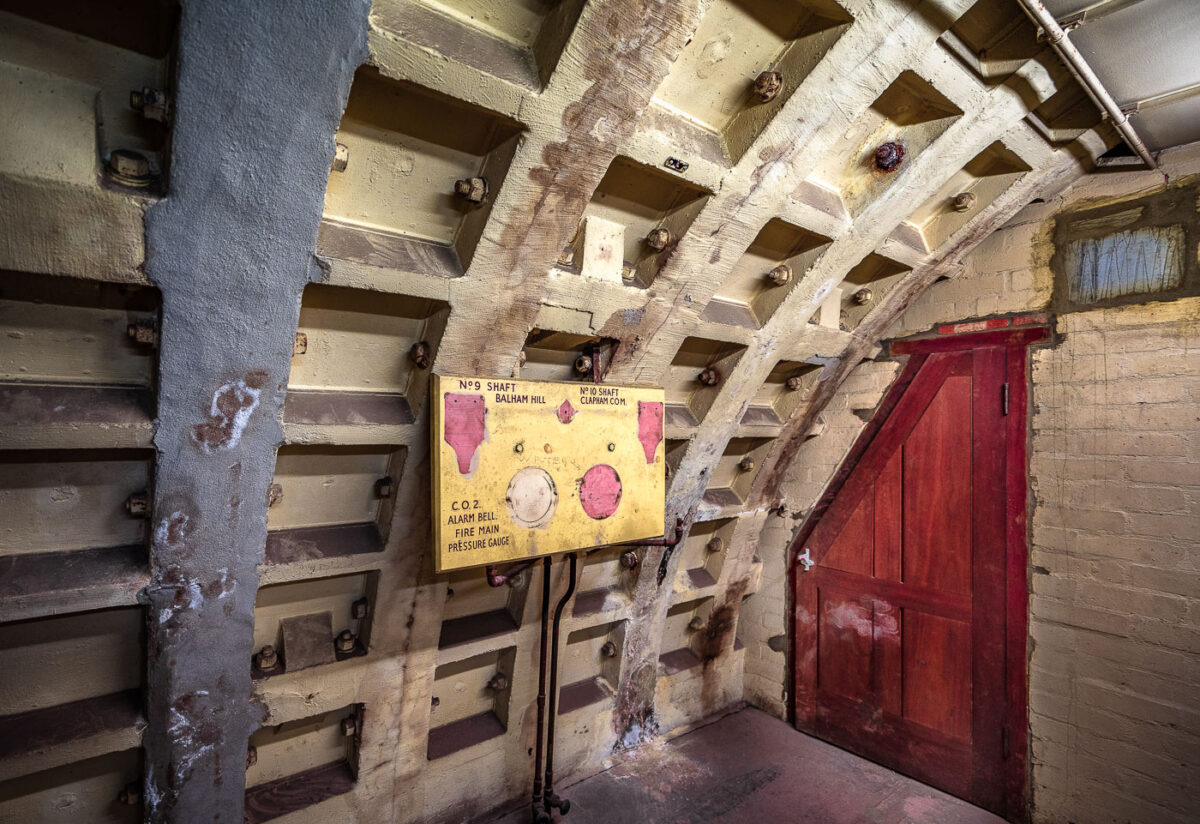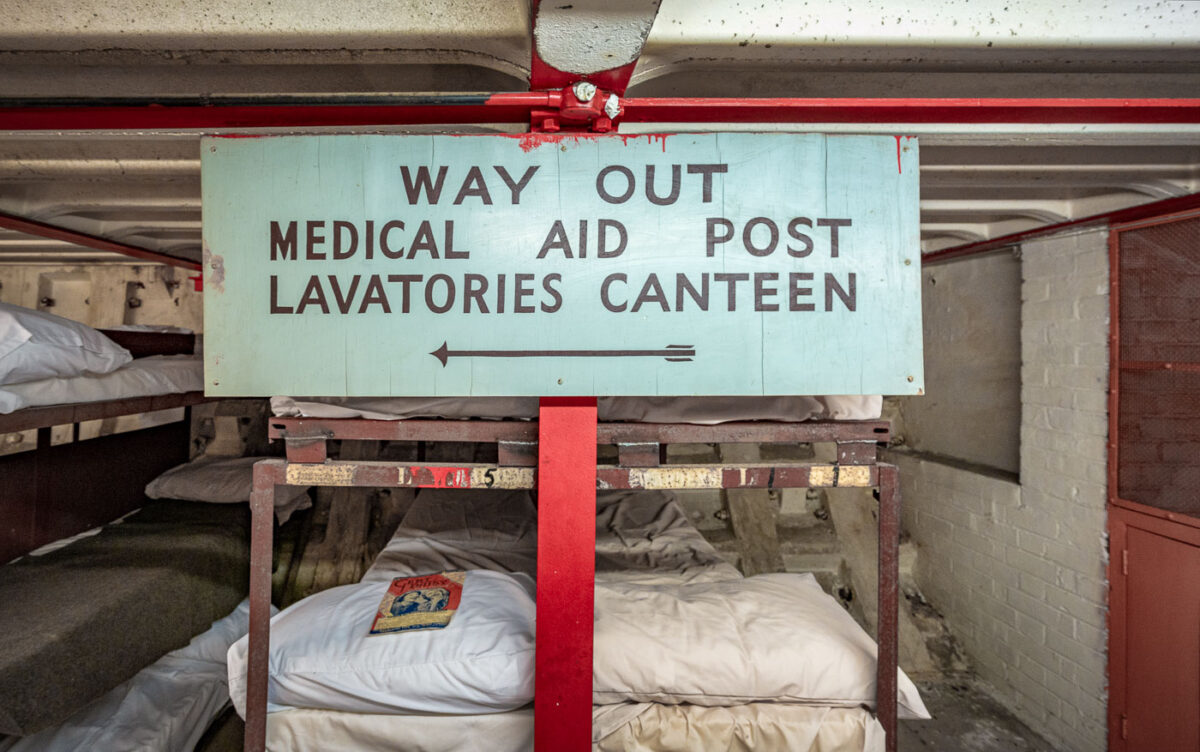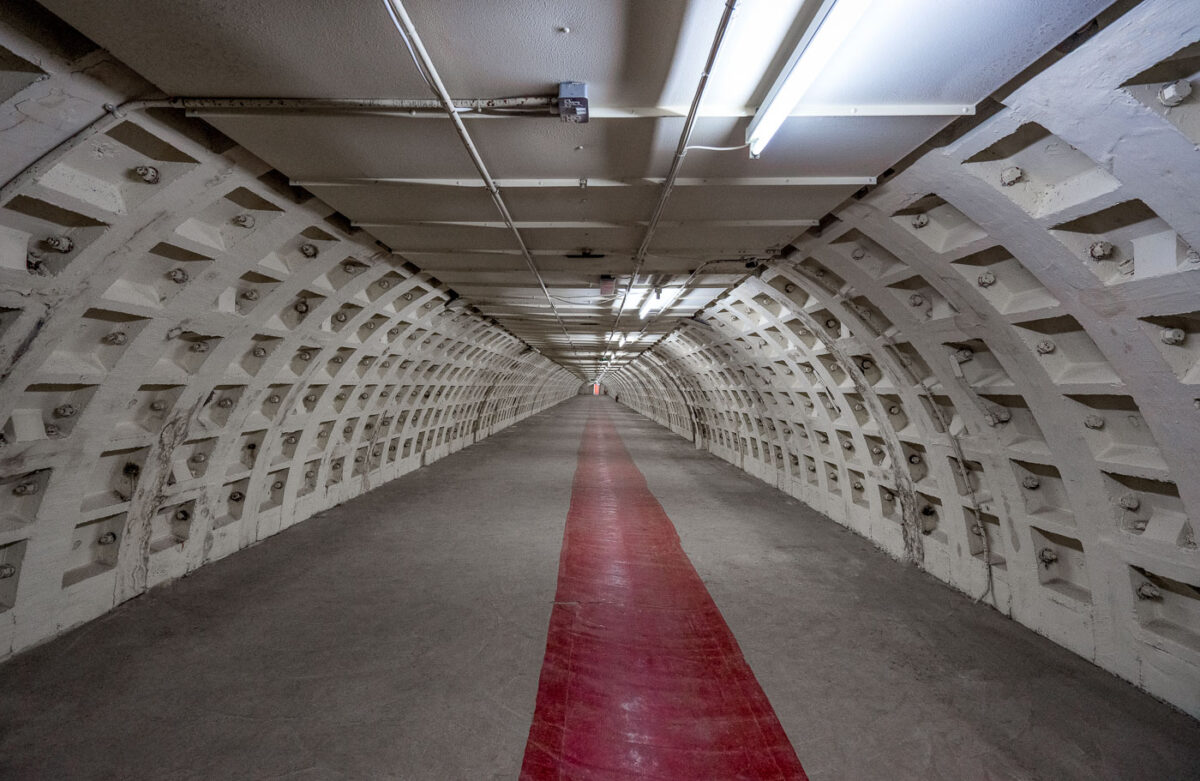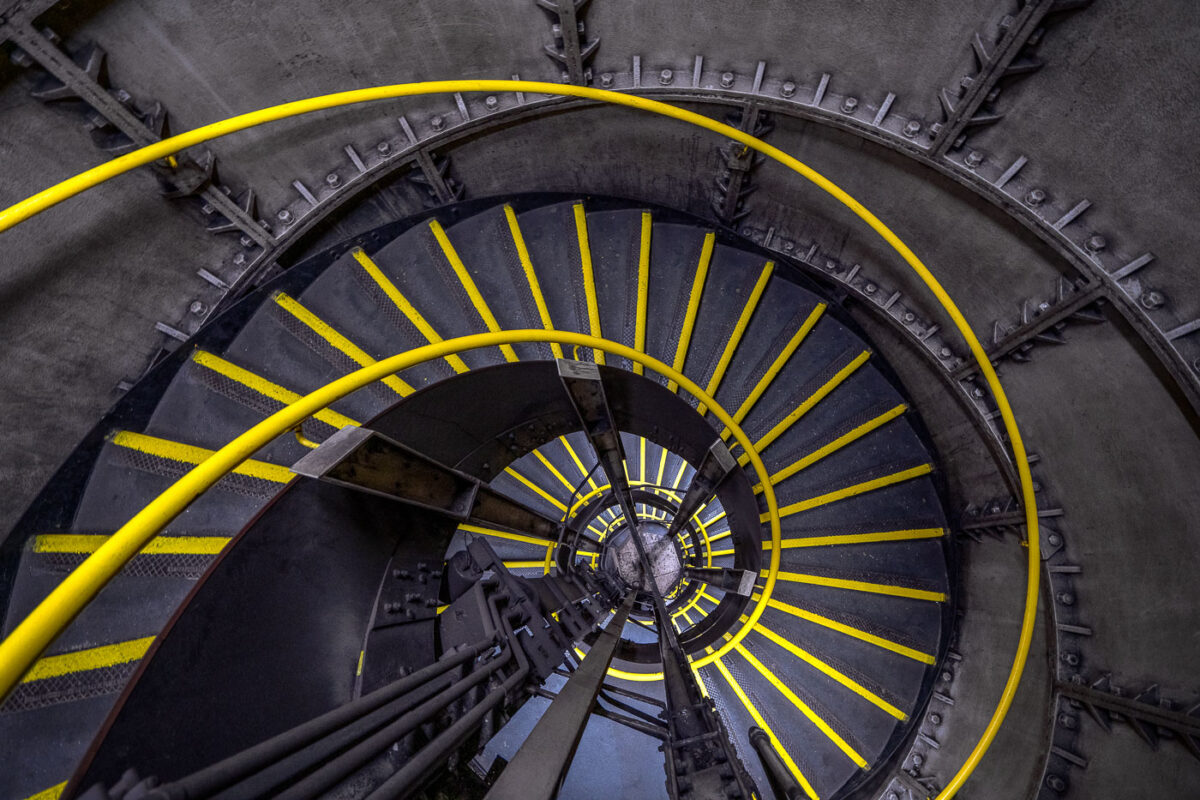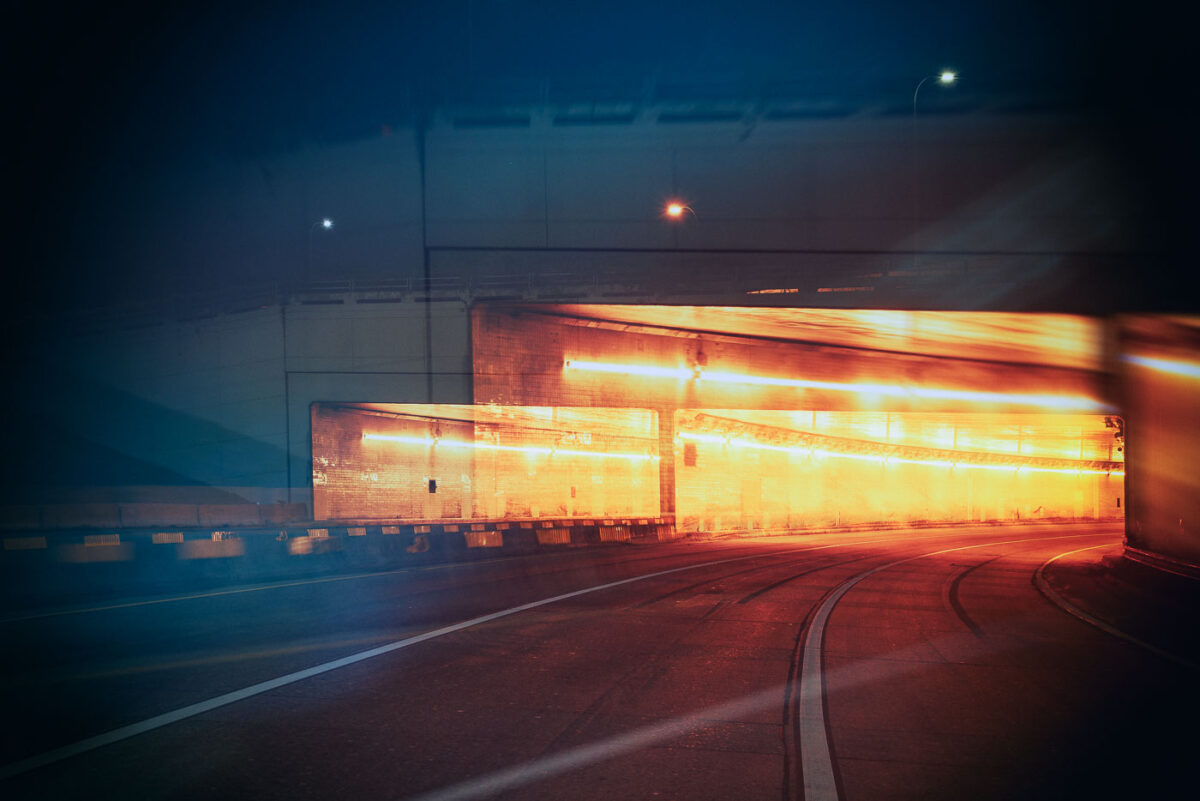A deep-level shelter tunnel beneath Clapham North, one of eight such subterranean structures built during World War II as civilian air-raid refuges along the London Underground. Constructed between 1940 and 1942, these reinforced cylindrical passages were designed to house up to 8,000 people during bombing raids, each equipped with bunks, lavatories, and medical posts. The distinctive bolted cast-iron lining — a hallmark of wartime tunnel construction — remains intact, illuminated by fluorescent fixtures added decades later.
After the war, the tunnels were repurposed for various uses, including temporary accommodation for Commonwealth immigrants and later as part of London Transport’s secure archival storage. Today, the Clapham North tunnels represent one of the most intact examples of London’s wartime civil engineering — a hidden layer beneath the active Northern Line that reveals the city’s dual legacy of transit innovation and wartime resilience.


